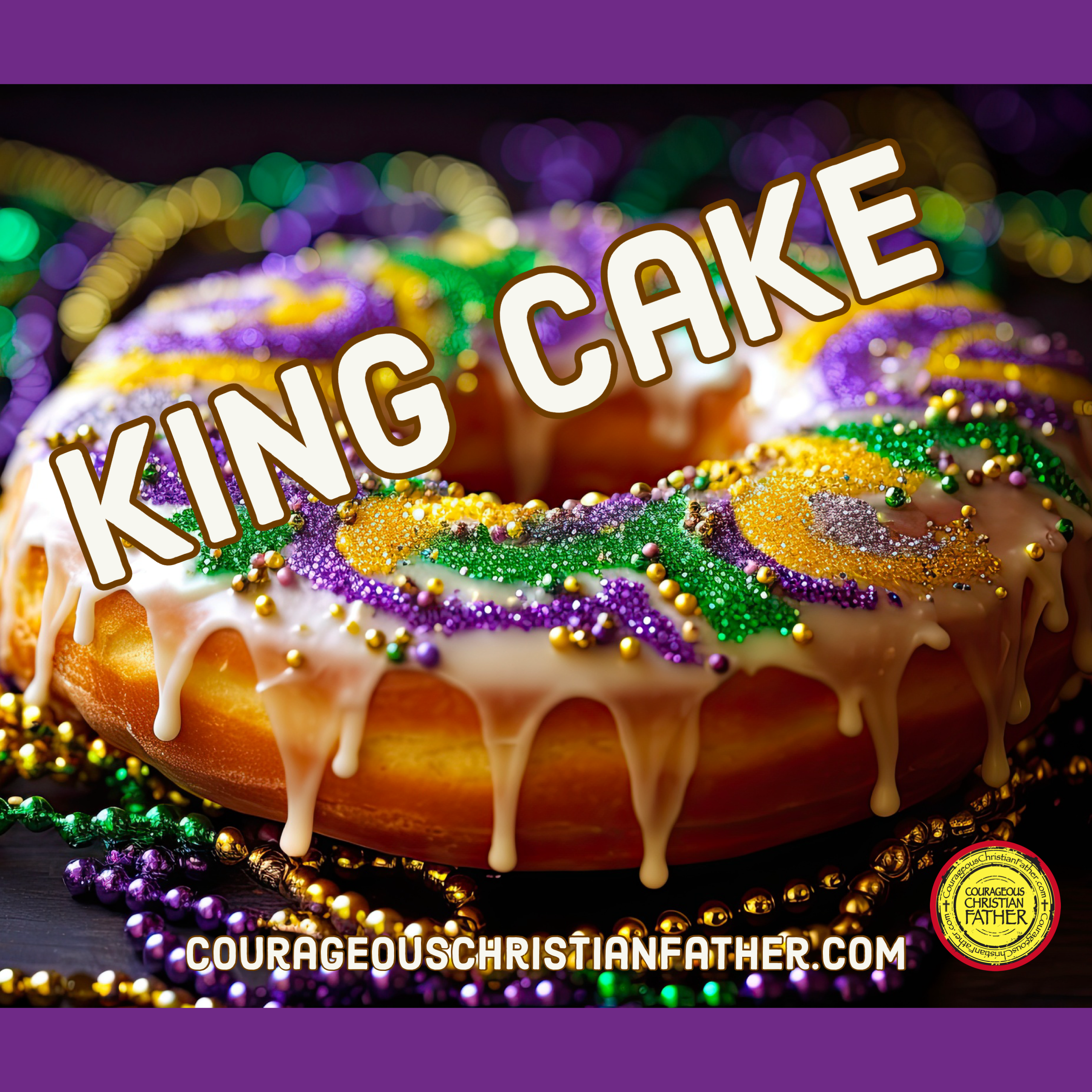King Cake: A Delicious Tradition with Deeper Meaning in Mardi Gras Celebrations – As Mardi Gras approaches, the vibrant festivities and colorful parades take center stage. Amidst the revelry, there’s a sweet treat that holds both culinary delight and symbolic significance – the King Cake. #KingCake
King Cake: A Delicious Tradition with Deeper Meaning in Mardi Gras Celebrations

Originating from Christian traditions, the King Cake has become a staple during Mardi Gras season, especially in areas with a strong Catholic influence. Its circular shape symbolizes the unity of faith and the eternal nature of God, while the colors – purple, green, and gold – represent justice, faith, and power, respectively.
The cake’s hidden surprise, often a small figurine representing baby Jesus, carries a profound message. It mirrors the biblical story of the three wise men searching for the Christ child, reinforcing the theme of seeking and finding the divine in our lives.
Sharing a King Cake has its own spiritual undertones. The act of breaking bread together reflects Christian fellowship and the communal aspect of faith. As we enjoy the sweet layers of the cake, we’re reminded of the layers of community, love, and shared faith that bind us together.
Mardi Gras, also known as Shrove Tuesday or Fat Tuesday, precedes the solemn season of Lent. The King Cake serves as a final indulgence before the period of fasting and reflection. It encourages believers to celebrate joyfully before entering a time of spiritual preparation and self-examination.
In a world often filled with chaos, the King Cake becomes a tangible reminder of the hope and joy found in the Christian faith. Its flavors and colors ignite our senses, drawing us into a deeper understanding of the rich symbolism woven into this delectable tradition.
The tradition of the King Cake dates back to medieval Europe, where it was associated with the celebration of Epiphany, also known as Twelfth Night. This Christian feast commemorates the visit of the three wise men, or Magi, to the infant Jesus. The cake symbolizes the journey of the Magi and the revelation of the Christ child.
Over time, the tradition evolved, and it became particularly prominent in France. French settlers brought the custom to the southern United States, especially Louisiana, where it became intertwined with Mardi Gras celebrations. The modern version of the King Cake, with its distinctive colors and hidden figurine, has become a beloved part of Mardi Gras festivities in regions influenced by French Catholic culture.
The King Cake is traditionally associated with the celebration of Epiphany, which falls on January 6th. This date commemorates the visit of the three wise men to the infant Jesus. In many cultures, this day marks the end of the Christmas season and the beginning of the Carnival or Mardi Gras season.
However, the consumption of King Cake is particularly prevalent during the weeks leading up to Mardi Gras, with the height of its popularity occurring on Fat Tuesday, the day before the Lenten season begins. In regions where Mardi Gras is celebrated, people often enjoy King Cake at festive gatherings, parties, and community events throughout the Carnival season. It has become a symbol of joy, unity, and indulgence before the period of Lenten fasting and reflection begins.
The King Cake is known by various names, reflecting its cultural diversity and regional variations. Some of these names include:
- Galette des Rois: In French-speaking regions, especially in France, the cake is often referred to as “Galette des Rois,” meaning “Kings’ Cake.”
- Rosca de Reyes: In Spanish-speaking cultures, particularly in Spain and Latin America, the cake is called “Rosca de Reyes,” translating to “Kings’ Ring” or “Kings’ Wreath.”
- Twelfth Night Cake: In some English-speaking traditions, the cake is associated with Twelfth Night, and it may be referred to as a “Twelfth Night Cake.”
- Epiphany Cake: As the cake is closely tied to the celebration of Epiphany, it is sometimes simply called an “Epiphany Cake.”
While the names may vary, the essence of the cake, its symbolism, and its association with the revelation of the Christ child during the Epiphany celebration remain consistent across different cultures and traditions.
So, as you savor each bite of King Cake this Mardi Gras season, or Epiphany, let it be a moment of connection – with your faith, with your community, and with the divine. May the sweet taste linger in your heart, reminding you of the enduring love and grace that transcends the festivities of the season.
Check out Courageous Christian Father’s Wish list on Amazon where you can purchase and this items sent directly to him and they will be used for the ministry.
Subscribe To Courageous Christian Father!
Don’t miss any blog posts! Subscribe today! You can subscribe via WordPress or by entering your email! Thank you!
Follow Courageous Christian Father on WordPress.comFollow Courageous Christian Father on Social Media
Recent Posts:
Below are some examples of blog entries from all the blogs that I do. (Courageous Christian Father, Steve Sews Stuff, and SteveZ DesignZ).
Thank You For Reading Courageous Christian Father!
Thank you for reading. Please feel free to share and like this blog post.
Clipart: Unsplash, Pixabay, Pexels, Openverse, Adobe Express, Adobe Stock, FreePik, MetroCreative, and more. This site uses Amazon Affiliate Ads & Google Ads.
About the Author
Discover more from Courageous Christian Father
Subscribe to get the latest posts sent to your email.



